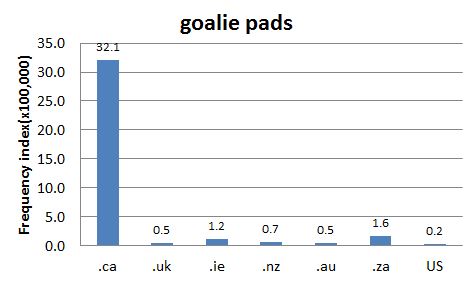DCHP-2
goalie pads DCHP-2 (April 2016)
n. — Hockey
protective guards covering the legs of the goaltender.
Type: 5. Frequency — The first goalie pads were developed around 1900 (Hynes & Smith 2008: 15, see the 1901 and 1907 quotations). Initially, goalies wore cricket pads, but as protection became more important, cricket pads were replaced by bigger, stronger pads. In 1924, goaltender Emil “pop” Kenesky widened his cricket pads to 12 inches, creating a model that goalies would employ for decades to come (Duplacey 2004: 45). The pads were first made of leather or horsehide filled with felt, deer hair or sponge. But these materials soaked up water from the ice and became heavy. By the late 1980s synthetic materials added more protection and allowed for greater mobility (see VMC reference). The first mention of the term goalie's pads was found in 1937, and of goalie pads in 1954. As Chart 1 shows, the term is today mostly used in Canada.See also: hockey
References:
- Duplacey (2004)
- Hynes & Smith (2008)
- VMC Pre-Game Skate: Origins & Evolution Accessed 21 Apr. 2015
Images:
Chart 1: Internet Domain Search, 20 Apr. 2015
